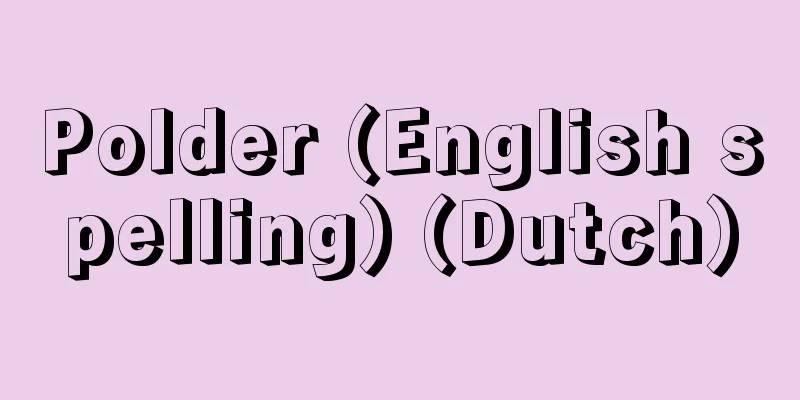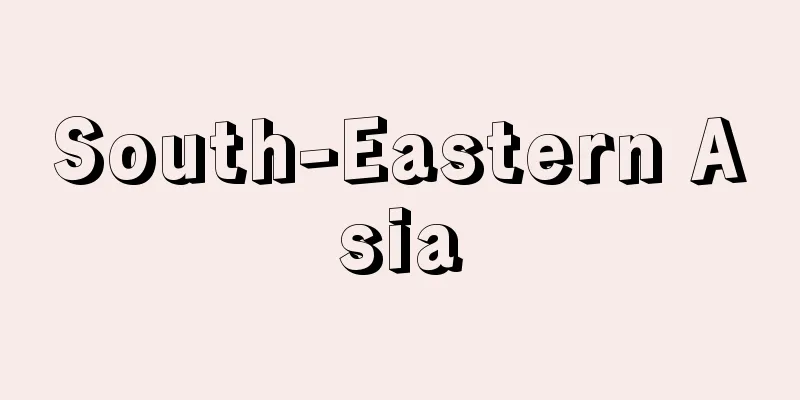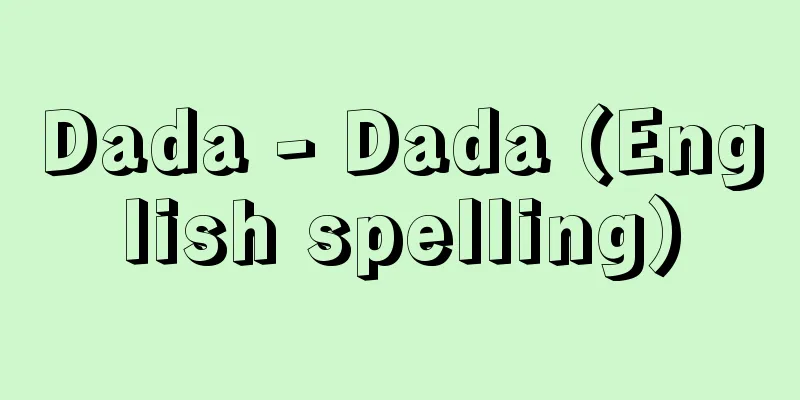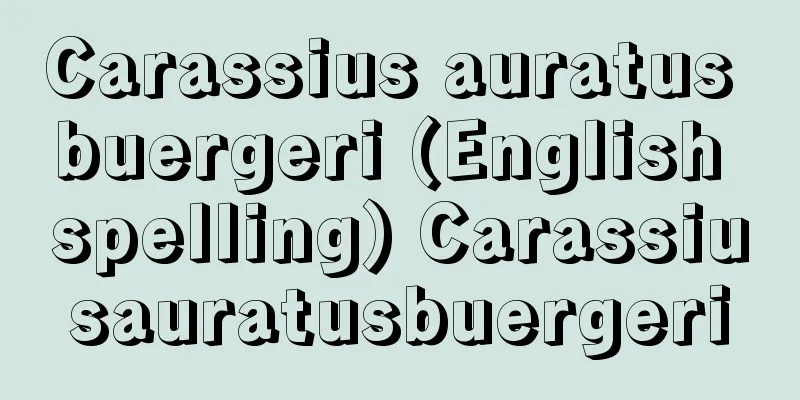Polder (English spelling) (Dutch)

|
A general term for reclaimed lands in the Netherlands that were created by enclosing low-lying marshes with dikes and draining the interior. Strictly speaking, there are three types of polders: sea polders, which are reclaimed tidal flats; peat bog polders, which are drained low-lying peat marshes; and lake polders, which are reclaimed lakes and marshes in peat areas. Sea polders have been created since Roman times along the Wadden Sea coast in the northeast and in the delta region in the southwest, and peat bogs have been developed behind sand dunes in the central Holland region since the Middle Ages. In contrast, the creation of lake polders progressed in the 17th century, the Golden Age of the Netherlands. Lowering sea levels, capital accumulation, and technological innovations such as large windmills and multi-stage pumping promoted lake reclamation, and 34 large lake polders were created north of Amsterdam. Drainage technology improved from windmills to steam pumps and then to electric pumps, and the largest reclamation of the Zuiderzee was started in 1918. The large dam at the mouth of the bay was completed in 1932, and it was transformed into freshwater IJsselmeer by injecting water from the Rhine. Five huge polders were planned within the lake, and they were completed in succession: Wieringersee polder (20,000 hectares), Noordostpolder (48,000 hectares), East Flevoland (54,000 hectares), and Zuid Flevoland (43,000 hectares). As for the last of them, the Markerwaard, although the dikes were built, the reclamation project was put on hold due to growing environmental awareness. In the polder, the groundwater level is generally high and the land is wet, so it is primarily used as pasture and hayland, with dairy farming being the main industry, but in some areas with good drainage, field crops and horticulture such as flower and vegetable cultivation have also been carried out. However, since the 1970s, due to changes in the industrial structure and the expansion of urban areas, the proportion of non-agricultural uses such as residential and industrial land, as well as forest and recreational land, has been increasing. [Takaharu Hasegawa] "The Story of Holland and Belgium" (1989, Graphic-sha), photographed by Norikazu Katsui and written by Etsuko Katsui; "The Low Netherlands: Architecture, Cities and Landscapes Developing in a Ridge" (1998, Maruzen), edited by Hisao Kayama and written by Toshikazu Ishida. [References] | | |Source: Shogakukan Encyclopedia Nipponica About Encyclopedia Nipponica Information | Legend |
|
低湿地を堤防で囲み、内部を排水して造成したオランダの干拓地の総称。厳密には、干潟を干拓した海面ポルダー、泥炭の堆積した低湿地を排水した泥炭地ポルダー、泥炭地域の湖沼そのものを干拓した湖沼ポルダーの3タイプに区分される。北東部のワッデン海沿岸や南西部のデルタ地帯ではローマ時代から海面ポルダーの造成がみられ、また中央部のホラント地方の砂丘背後では中世から泥炭地が開発されていた。これらに対し、湖沼ポルダーはオランダの黄金時代である17世紀になって造成が進展した。海面低下や資本蓄積、また大型風車と多段揚水という技術革新が湖沼干拓を推進したのであり、アムステルダム北方で34の大規模湖沼ポルダーが誕生した。 その後、風車から蒸気ポンプへ、さらに電気ポンプへと排水技術が向上し、1918年には最大のゾイデル海干拓が着手された。湾口の大締切堤防は1932年に完成し、ライン川の水を注入することで淡水のアイセル湖に変化した。湖中には五つの巨大ポルダーが計画され、ウィーリンガー湖ポルダー(2万ヘクタール)、北東ポルダー(4万8000ヘクタール)、東フレボラント(5万4000ヘクタール)、南フレボラント(4万3000ヘクタール)と順次完成したが、最後のマルカーワールトに関しては、築堤はされたものの、環境意識の高まりから干拓事業は凍結されている。 ポルダー内は一般に地下水位が高く低湿なため、放牧地・採草地としての利用が卓越して酪農が主産業となるが、一部の排水良好地では畑作や花卉(かき)・野菜の園芸農業も営まれてきた。しかし1970年代以降は、産業構造の変化や都市域の拡大などから、住宅・工業用地、また森林・レクリエーション用地など非農業的利用の比重が高まっている。 [長谷川孝治] 『勝井規和写真、勝井悦子文『オランダ・ベルギー物語』(1989・グラフィック社)』▽『香山寿夫監修、石田寿一著『低地オランダ――帯状発展する建築・都市・ランドスケープ』(1998・丸善)』 [参照項目] | | |出典 小学館 日本大百科全書(ニッポニカ)日本大百科全書(ニッポニカ)について 情報 | 凡例 |
>>: Porta (English spelling) Porta, Carlo
Recommend
Ball incense burner - Kyukoro
...The common type of incense burner is a shallow...
Aleppo gall (English spelling) Aleppogall
…In Europe, it is sometimes used as a source of t...
Records of the Kenmu Era
Also known as the "Kenmu Ninenki" or &q...
Speciation
New species arise from the divergence of ancestral...
Rear Window
The 1950s, when the threat of television brought ...
Breath - Kisoku
〘 noun 〙① life. The way of living. Breathing. The ...
Torayasu Amari - Too much Torayasu
...A medieval samurai from Kai. A branch of the T...
Diversion/Transfer - Ryuyouiyou
In principle, budget expenditures are not permitte...
Shinmei Mirror
A chronicle from Emperor Jimmu to Emperor Gohanazo...
Mahmud Shah
In 1509, a Portuguese fleet led by Sequeira appea...
Plant - Shokubutsu (English spelling) plant English
Living organisms on Earth can be broadly divided ...
Action game (English)
A type of computer game in which players quickly c...
permanent white
…When this solution is diluted with water, the ba...
Paguridae
…General term for crustaceans belonging to the de...
Astronomical spectroscopy
A branch of astrophysics that studies the physica...

![Matama [town] - Matama](/upload/images/67cce60aaad29.webp)







